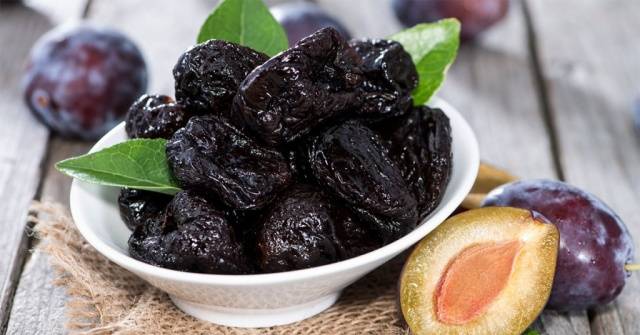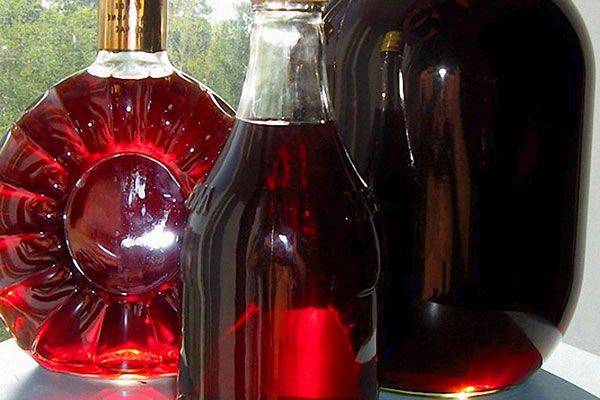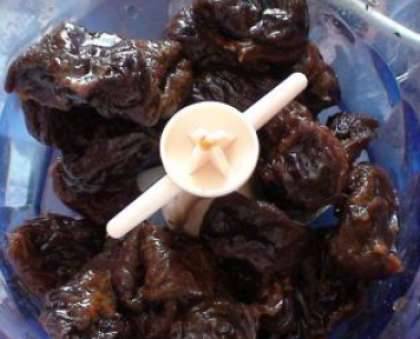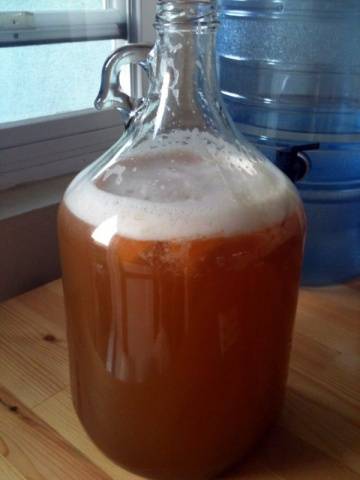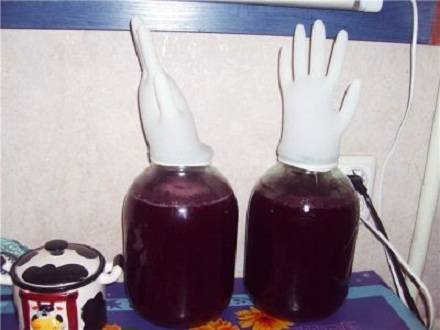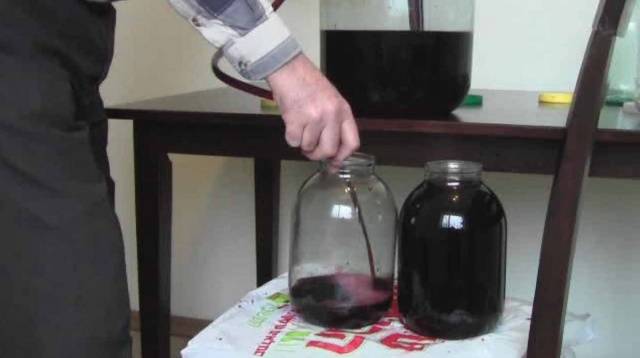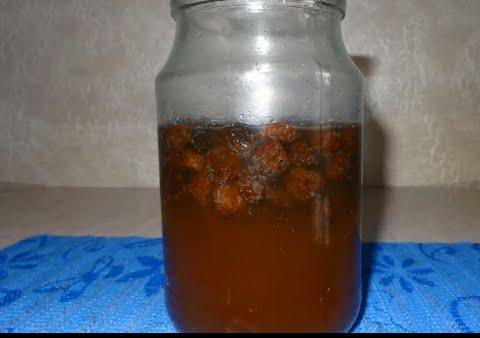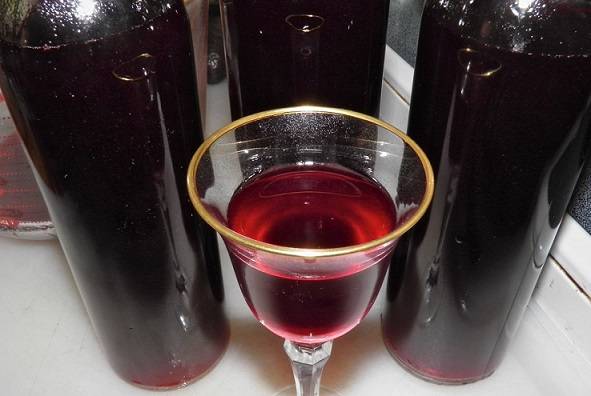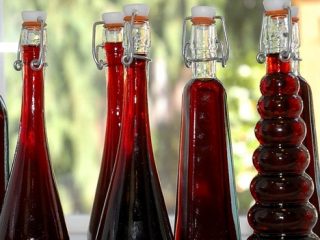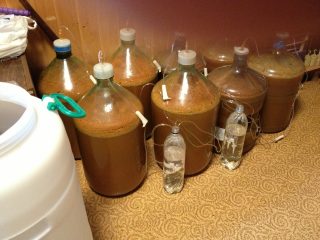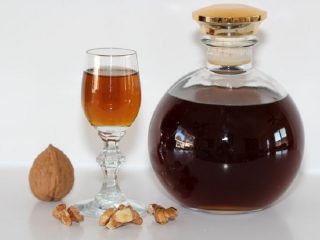Content
Prunes are not only tasty, but also a very healthy product. Since it is not heat-treated, it manages to retain all the vitamins and minerals inherent in the plum. And a considerable amount of pectin substances allows you to improve the functioning of the intestines and cleanse the body.
These dried fruits are delicious in their natural form, they can be used to make various desserts and baking fillings. Added to fruit pilaf, they add flavor and flavor to it. You can also use prunes to make wine. Homemade prune wine has a specific taste of dried fruits and ripe plum aroma. It turns out to be dessert.
Characteristics of prune wine
- color - burgundy, dark;
- taste - sweet and sour with tart notes;
- aroma - dried fruits and plums.
There are several recipes for its preparation. For those who do not want to spend a lot of time and effort, we can offer the simplest one. It is very easy to make wine with it.
Unsourdough prune wine
For one can with a capacity of 5 liters you need:
- sugar - 800 g;
- prunes - 400 g;
- water - 3 l.
Dried fruits should be chosen of high quality, necessarily without seeds and external damage.
Wash the jar well, pour dried fruits into it, pour water with sugar dissolved in it.
In urban settings, it is better to use boiled water.
We close it with a plastic lid with a small hole. We put it in a dark and warm place and forget about it for a month. By this time, the wine will be ready. All that remains is to bottle it and taste it.
The next recipe for making prune wine at home will take more time and effort. But the taste of such a wine is incomparably better.
Sourdough prune wine
It is prepared in several stages.
Ingredients:
- sugar - 2 kg;
- good quality prunes - 1.2 kg;
- water - 7 liters, always boiled.
First, let's prepare the leaven. The strength of fermentation depends on its quality, and, therefore, the taste and strength of the future wine.
Grind a glass of dried fruits. To do this, you can use a blender or meat grinder. We shift the prune puree into a half-liter jar. Pour 0.5 cups of boiled water into it, in which 50 g of sugar is dissolved. Mix everything well and place the jar covered with gauze in a dark, not cold place.
For 3-4 days, our leaven should ferment. If foam appears on the surface, a slight hiss indicates the release of gases, and the contents of the can smell of fermentation - everything was done correctly.
We proceed to the main stage. Fill the remaining prunes with boiling water. It will need 4 liters. After an hour of infusion, we filter the wine must into a separate bowl. Grind the prunes in the same way as for the sourdough, add 1 liter of cold boiled water to it, in which we dissolve 0.5 kg of sugar. Add sourdough to the wort cooled down to 30 degrees, mix and leave to ferment in a dark place. The fermentation process takes 5 days. The dishes should be covered with gauze.
Strain the wort after five days. Add a glass of sugar to it, stir until it dissolves and pour it into containers for further fermentation.
The containers need to be filled 2/3 to leave room for the foam to rise.
We put a water seal or put on a rubber glove with holes punctured in it. Fermentation should take place in a dark place. The optimum temperature is about 20 degrees. After another 5 days, pour a glass of wort into a separate bowl, add the same amount of sugar to it, stir until dissolved and pour back into the wort.
After about a month, the fermentation process weakens. The signal of this is a fallen glove and a decrease in the number of emitted gas bubbles. Gently drain the wine from the lees. To do this, we will use a rubber or plastic tube. We bottle the wine for maturation. If the sediment re-forms, we repeat the draining process. This can be done several times.
The wine matures for 3-8 months. The strength of the drink is not more than 12 degrees. It can be stored for up to 5 years.
The sourdough can be prepared not only with prunes, but also with raisins. Special wine yeast can also replace it.
Prune wine with sourdough on raisins
For him you need:
- 100 g raisins;
- 1 kg of prunes;
- the same amount of sugar;
- 5 liters of water, always boiled.
Making sourdough. Pour unwashed raisins in a glass jar with a glass of water in which 30 g of sugar is dissolved. We put the leaven to ferment in a dark, warm place for 4 days. Cover the neck of the jar with gauze.
We wash the prunes, pour 4 liters of boiling water into it. We insist an hour, covering the dishes with a lid. We filter the infusion into a separate bowl with a wide neck. Grind the prunes, add 20% by volume and half the sugar to the cold water infusion. As soon as the wort cools down to 30 degrees, add the sourdough to it, mix, cover with gauze and leave to ferment in a dark, warm place.
We mix the wort every day, immersing the floating prunes in the liquid.
After 5 days, filter the fermented wort, squeeze the prunes and discard. Pour the wort into jars, adding a quarter of the sugar rate beforehand. It cannot be topped up to the top, otherwise there will be no room for the foam. We fill the container by 3/4 of the volume. We put a water seal or put on a punctured medical glove. After another 5 days, pour out a quarter of a liter of wort and dissolve the remaining sugar in it, pour it back.
Wine fermentation lasts at least a month. When it stops, and this will be noticeable by the cessation of the release of bubbles and the falling off of the glove, we drain the wine using a siphon into another dish. It should not get sediment.
Let it ferment completely under a water seal or a glove and again drain it from the sediment. Bottled for aging.
Wine ripens from 4 to 8 months. You can add sugar to the finished drink for sweetness or 10% of the volume of vodka for strength.
Homemade winemaking is an exciting experience. Over time, experience and a "sense of wine" develops, which will allow you to experiment, achieving the perfect taste of the prepared product.

